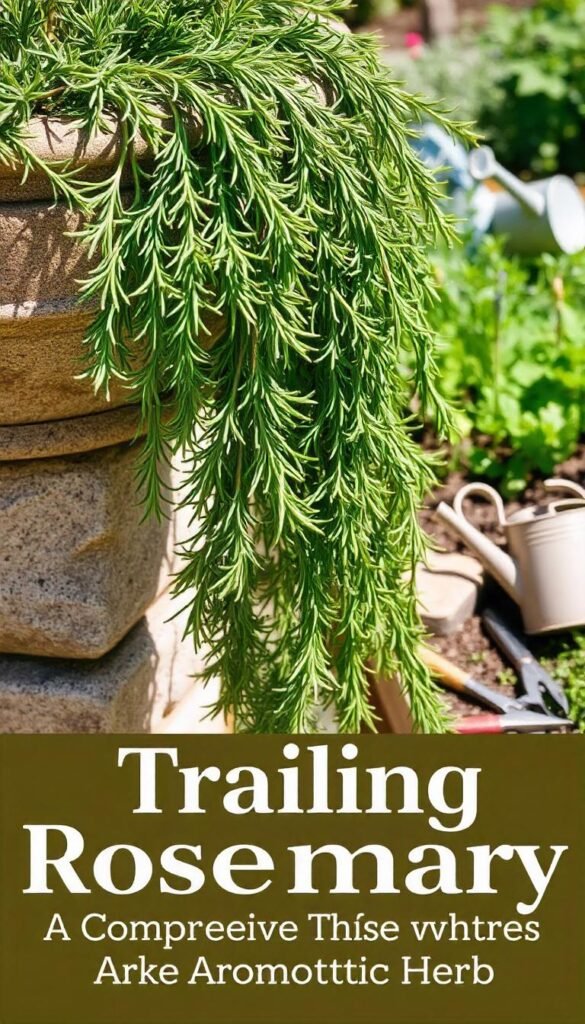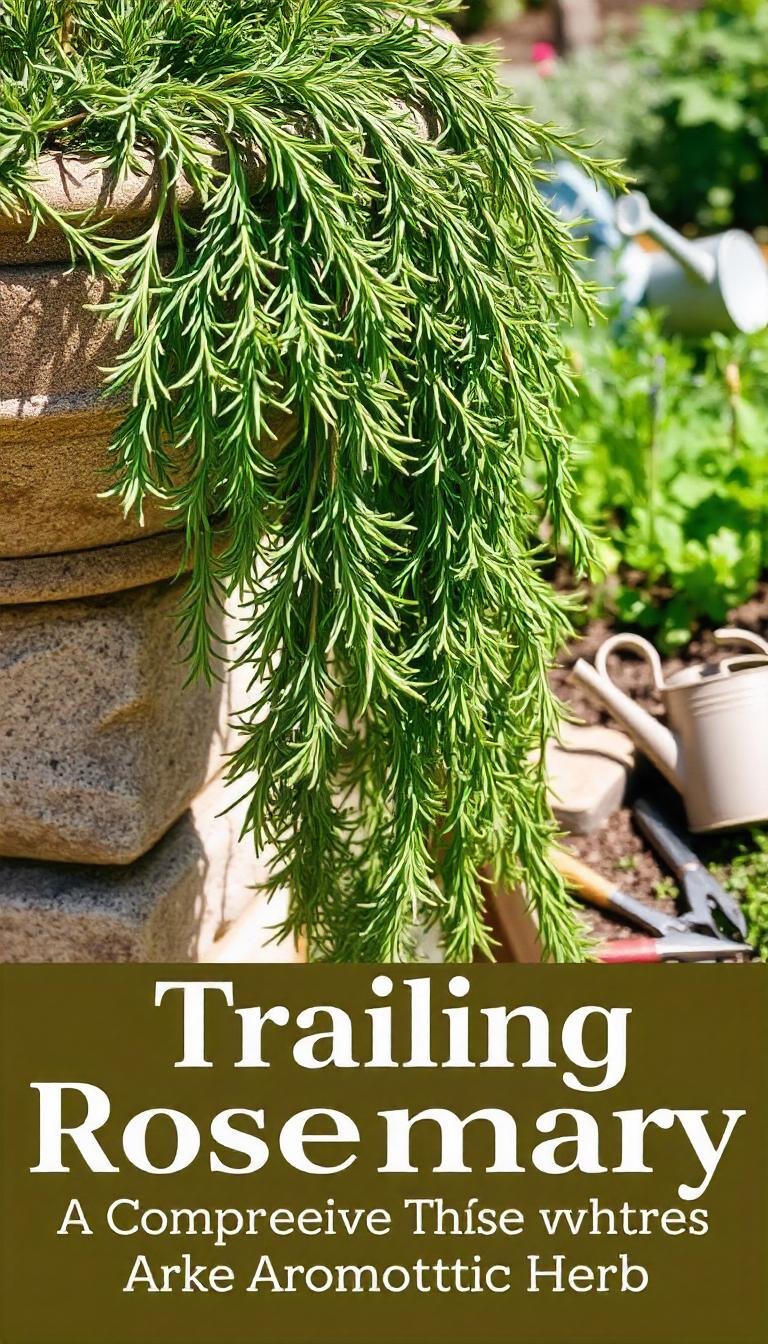Discover how to grow and care for trailing rosemary, a versatile and fragrant herb. Learn expert tips on planting, maintenance and uses in cooking and landscaping. Perfect for gardens, containers and hanging baskets.
Trailing rosemary (Rosmarinus officinalis var. prostratus) is a low-growing, spreading variety of the popular herb. It thrives in full sun, well-draining soil, and moderate watering. This drought-tolerant plant is ideal for rock gardens, hanging baskets, and as a ground cover. It offers the same aromatic leaves as upright rosemary, perfect for culinary and ornamental uses.
Introduction to Trailing Rosemary

As a horticulturist specializing in Mediterranean herbs, I’m excited to share my expertise on growing and caring for trailing rosemary. This versatile plant not only adds beauty to your garden but also provides a bounty of flavorful leaves for cooking.
Understanding Trailing Rosemary
Trailing rosemary is a prostrate form of Rosmarinus officinalis, known for its creeping habit and cascading growth. It typically grows 6-12 inches tall but can spread up to 4-8 feet wide.
For more information on rosemary varieties, visit the University of Florida’s IFAS Extension page.
Growing Trailing Rosemary

Climate and Hardiness
Trailing rosemary is hardy in USDA zones 8-10. In colder regions, it can be grown as an annual or brought indoors for winter.
Sunlight Requirements
- Full sun (6-8 hours of direct sunlight daily)
- Can tolerate partial shade in hotter climates
Soil Preferences
- Well-draining soil is crucial
- Prefers slightly alkaline soil (pH 6.0-7.5)
- Add sand or gravel to improve drainage if needed
For more on soil requirements for herbs, check the Clemson Cooperative Extension’s guide.
Planting Trailing Rosemary
When to Plant
- Spring or fall in mild climates
- Spring in colder regions
Planting Process
- Choose a location with proper sunlight and drainage
- Dig a hole twice the width of the root ball
- Plant at the same depth as it was in the container
- Space plants 2-3 feet apart
- Water thoroughly after planting
Care and Maintenance
Watering
- Water deeply but infrequently
- Allow soil to dry between waterings
- Avoid overhead watering to prevent fungal diseases
Fertilizing
- Minimal fertilization required
- Apply a balanced, slow-release fertilizer in spring if needed
Pruning
- Prune lightly after flowering to maintain shape
- Avoid cutting into old, woody growth
For pruning tips, visit the Royal Horticultural Society’s rosemary pruning guide.
Common Uses for Trailing Rosemary
Landscaping
- Ground cover for slopes and rock gardens
- Hanging baskets and container gardens
- Cascading over walls or raised beds
Culinary Uses
- Flavoring for meats, especially lamb and poultry
- Infusing oils and vinegars
- Adding to bread and focaccia
For culinary inspiration, check out The Spruce Eats’ rosemary recipes.
Pest and Disease Management
Common issues include:
- Root rot: Ensure proper drainage
- Spider mites: Increase humidity and use insecticidal soap if necessary
- Powdery mildew: Improve air circulation and avoid overhead watering
For more on rosemary pests and diseases, visit Penn State Extension’s herb pest management page.
Propagation
Trailing rosemary can be propagated by:
- Stem cuttings in late spring or early summer
- Layering
- Division of established plants
Companion Planting
Trailing rosemary pairs well with:
- Other Mediterranean herbs like thyme and oregano
- Drought-tolerant plants in rock gardens
- Spring-flowering bulbs for color contrast
Conclusion
Trailing rosemary is a versatile and aromatic addition to any garden. Its low-maintenance nature, coupled with its culinary and ornamental value, makes it a favorite among gardeners and cooks alike. By providing the right growing conditions and care, you can enjoy the beauty and flavor of this herb for years to come.
For more comprehensive information on herb cultivation, visit the Herb Society of America’s website.
For more gardening tips and plant care guides, visit usagardenhub.com.


2 thoughts on “Trailing Rosemary : A Comprehensive Guide to Growing This Aromatic Herb (2024)”